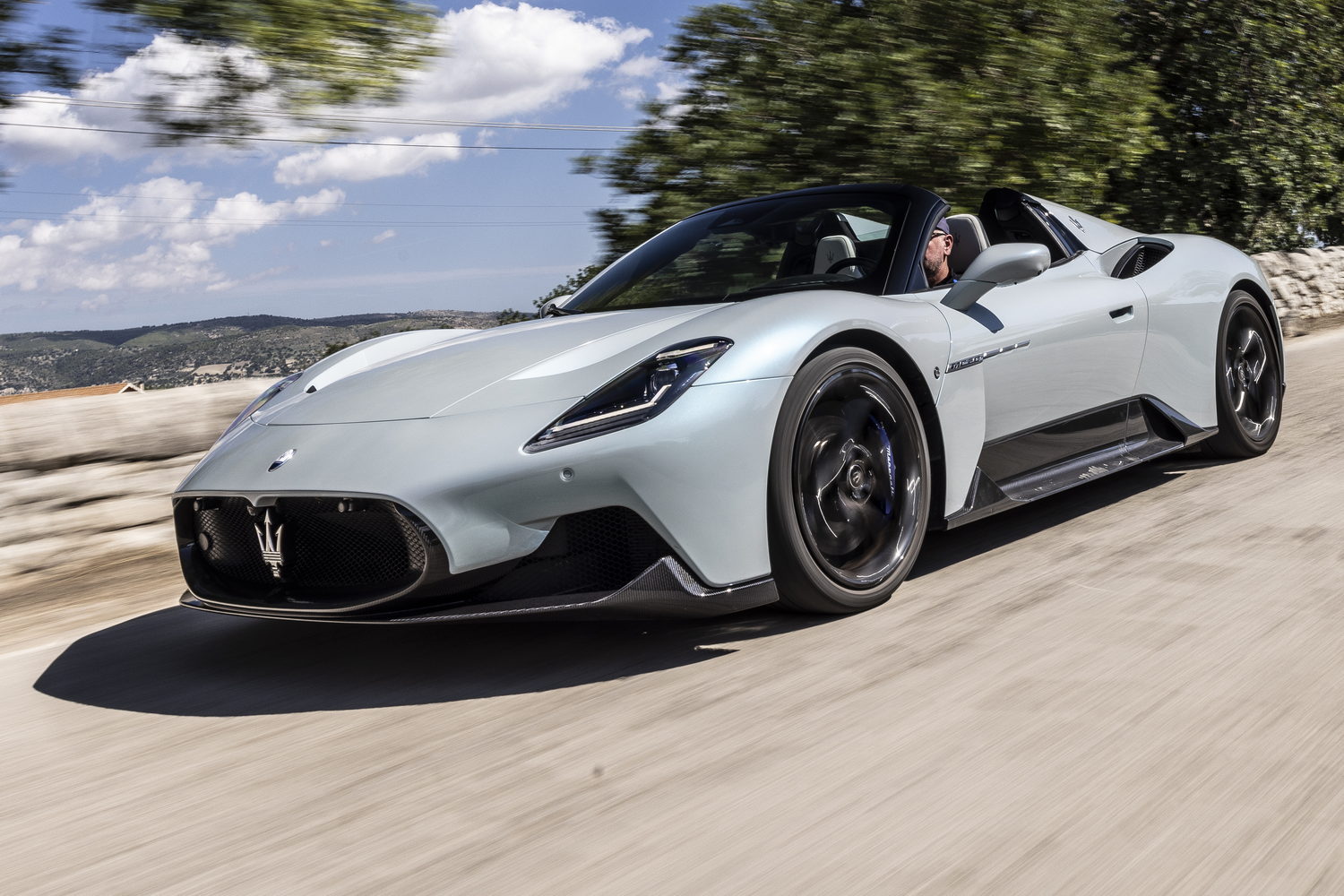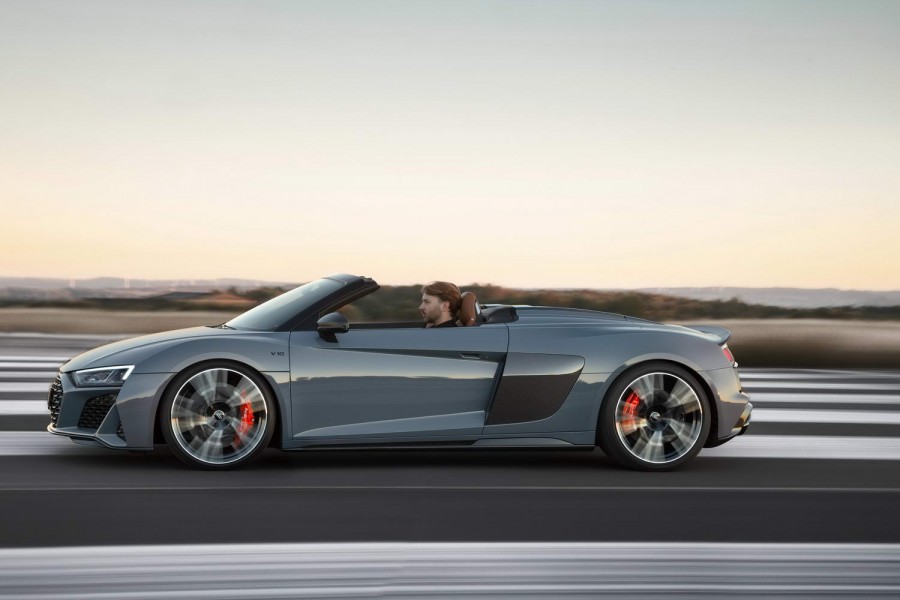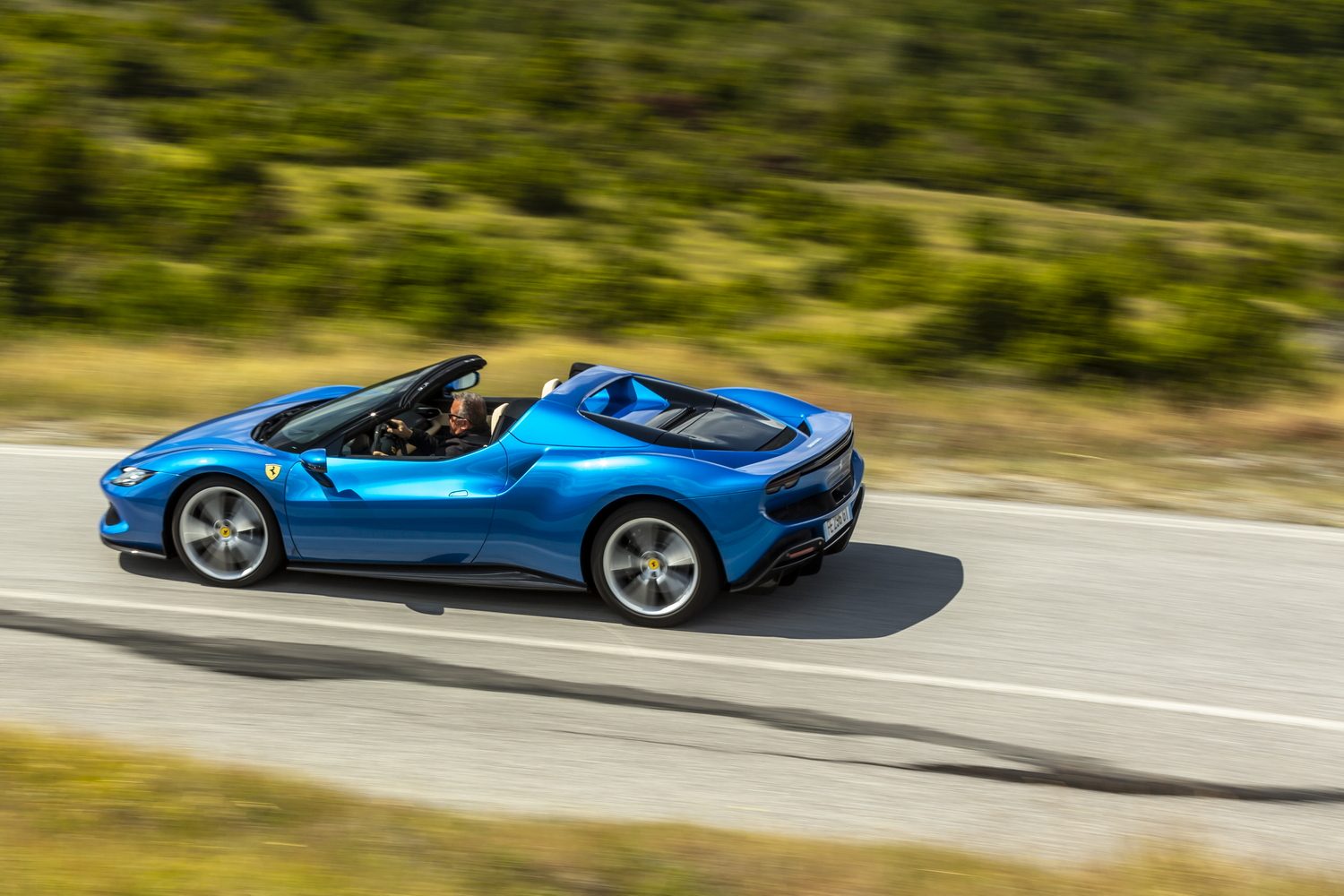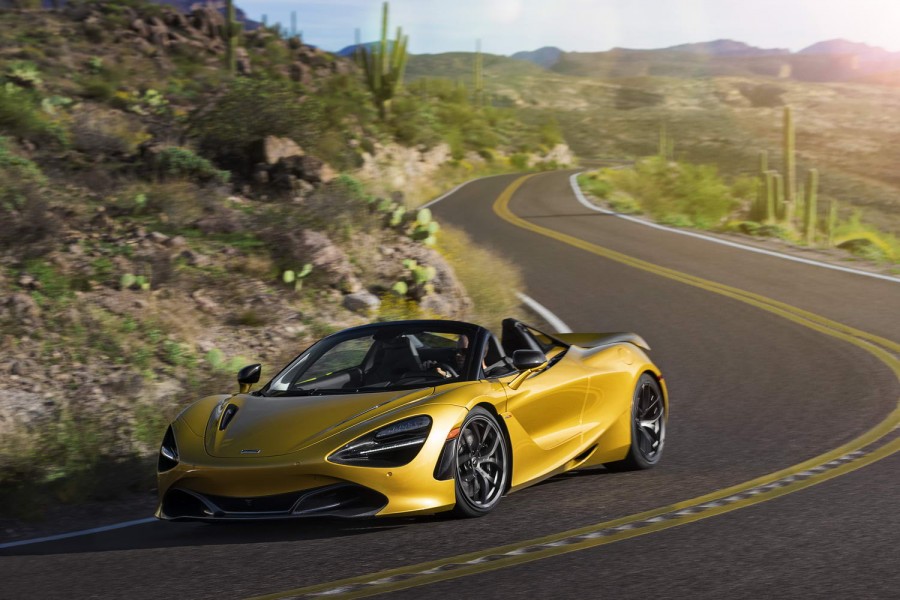Maserati's new MC20 supercar has already launched with plenty of critical acclaim, and now the Italian brand has brought out the inevitable open-top version. It's called the Cielo, and Maserati's engineers claim it's very nearly as good as the hard-top car on which it is based. Should that be true, we might have a Ferrari 296 GTS rival on our hands.
In the metal
Although the Cielo looks broadly similar to the standard Maserati MC20, particularly with the roof up, there are some notable differences between the hard-top and convertible models. At the front, it's business as usual with that low snout, smooth lines and rounded headlights, as well as the upward-opening doors and the carbon-fibre aerodynamic features, but the rears are slightly different.
At the back, Maserati has raised the haunches in the Cielo a little to accommodate the folding roof, while two big buttresses stretch out behind the seats. The rear deck has a few new vents to make the most of the air flowing over the windscreen, too, and Maserati will paint on a huge trident logo if you so wish, adding some visual interest that looks better than it sounds.
The MC20 Cielo has no see-through engine cover, but it does get a glass wind deflector sitting between the buttresses that can be raised or lowered using a function in the touchscreen. The deflector doubles as a rear window when the roof is up, but it's far from the most impressive piece of glass in the cabin. That honour goes to the panel in the roof, which lets the light in even when the rain is being kept out, and comes with electrically adjustable transparency settings.
Of course, Maserati could have saved some weight by using a composite or carbon-fibre roof, but the Italian engineers reckon they've recouped most of the extra bulk by using an electric roof folding mechanism, rather than the electro-hydraulic system used in most convertibles. As a result, the Cielo only weighs 65kg more than the coupe, and it has a fabulously airy interior.
It may only be a two-seater, but there's plenty of space for two relatively tall adults, and although the sculpted seats are a bit firm, there's ample wriggle room for most. Even when the roof is up, you're never in danger of banging your head. The Cielo's boot space doesn't suffer as a result of the folding roof, either, although the coupe is hardly spacious in that regard. Both cars come with a 100-litre luggage space at the back and a 50-litre tub at the front. But be warned: after a long drive, the rear load space gets decidedly warm...
As you might expect from a drop-top Italian supercar, what the Cielo lacks in practicality, it makes up for in style. As with the MC20 coupe, the cabin is beautifully minimalist, with just a central touchscreen, a digital instrument display and a multifunction steering wheel to play with. However, the Cielo does introduce some new features that are set to become standard across the MC20 range, including a new drive mode selector on the transmission tunnel. The new system combines a rotary switch and a touchscreen, making for a cleaner and more visually satisfying way of switching engine and suspension modes.
The technology is generally good by supercar standards - the MC20's instrument cluster and touchscreen are easier to use than those employed by Ferrari for example - but it isn't perfect. Although they're heavily redesigned, the basic systems are used by sister companies Citroen, Peugeot and Alfa Romeo, so the navigation screen looks oddly familiar. That's no disaster, but it means other brands are still providing slicker and more user-friendly displays, albeit often in less exciting cars.
That said, a special mention should go to the MC20's rear-view camera, which is part of the rear-view mirror. By using a camera mounted on the rear of the car and displaying it on the mirror at the touch of a button, Maserati has gone a long way to solving the Cielo's supercar-typical visibility issues. Even lowering the roof doesn't help matters much, thanks to the huge buttresses, but the camera is a great help.
Driving it
If we're being really, truly honest, convertible supercars are for one thing and one thing only: posing. But Maserati has put in plenty of hours trying to make the differences from behind the wheel between the MC20 Cielo and the standard coupe as difficult to spot as possible. An extra 65kg - an increase of around five per cent - is hardly likely to make its presence felt, particularly when the Cielo's performance figures are identical to those of the coupe.
That's despite Maserati doing nothing new to the engine, which is the same 3.0-litre, 630hp 'Nettuno' V6 you'll find in the coupe. Positioned just behind the driver's kidneys and driving the rear wheels through an eight-speed automatic gearbox, it's capable of forcing the MC20 - either in Cielo or coupe form - from 0-100km/h in a little under three seconds, and the top speed is well over 320km/h. But while the performance figures look good on paper, they aren't a huge amount of use on the public road.
We'd argue that driver engagement and comfort are far more appealing, and that's where the Cielo shines. The ride, for example, is surprisingly comfortable even in the stiffer suspension settings, and the Maserati glides over all but the most broken surfaces or the most savage potholes. That gives it the feel of a GT car, rather than an outright supercar, but there's no harm in that. If you have distances to cover before reaching the good roads, simply put the suspension in its softest setting and arrive feeling remarkably fresh.
But don't for a minute think the Cielo will be shown up when it reaches your favourite back roads. Yes, it may have lost some rigidity with the removal of the roof, but you'd be hard pushed to spot that. Flip it into one of its sportier settings and it comes alive. The steering is great in GT mode, with plenty of precision and feel, but it feels heavier and more substantial when you progress to Sport or Corsa mode. That, combined with the enormous amount of grip provided by those huge tyres, gives you immense confidence in the car's abilities.
Lean on it and it rewards you, turning in savagely and staying almost completely level through corners, even at sizeable speeds. Perhaps it doesn't feel as light or as nimble as a Ferrari 296, but it's still impressively agile and the cornering speeds are unbelievable. Admittedly, the optional carbon-ceramic brakes fitted to our test car lacked a bit of feel - particularly when they were cold - and they made an irritating squeak, but there's no arguing with their performance. The stopping power is epic.
As is that Nettuno V6 engine. It doesn't have the animal howl of Ferrari's V6, but it snarls and pops and bangs at all the right moments, and the sound is unadulterated with the roof off. As the revs rise, the snarl turns into a scream, and the exhaust gets flatulent during gearshifts, but arguably the best noise is the fluttering 'whoosh' of the turbo wastegate when you back out of the throttle. It helps to make the preposterously simple act of overtaking feel that little bit more exciting, even if such things are a little childish.
But the sound of the engine is not the only thing that can reach you when the roof is off. The Cielo's cabin can get a bit noisy and blustery with the roof down, especially at high speeds or when the windows are down, but it's generally pretty refined at everyday speeds. Put the roof up and you'd never know it was a convertible.
What you get for your money
If you want a Maserati in Ireland, then you'll have to wander north of the border and pay a visit to Charles Hurst in Belfast. The starting price of the MC20 Cielo there is in the region of £230,000, so figure on close to €500,000 imported once all the taxation is taken into account.
Summary
The Maserati MC20 Cielo is a glorious supercar, merging fine handling and ludicrous pace, despite the removal of the roof. Yes, that has made the car heavier and more complex, but the advantages are myriad. Not only will it sit well with the posers, but enthusiasts are catered for too, and that's a potent combination. This right here is simply the best Maserati in years.












































